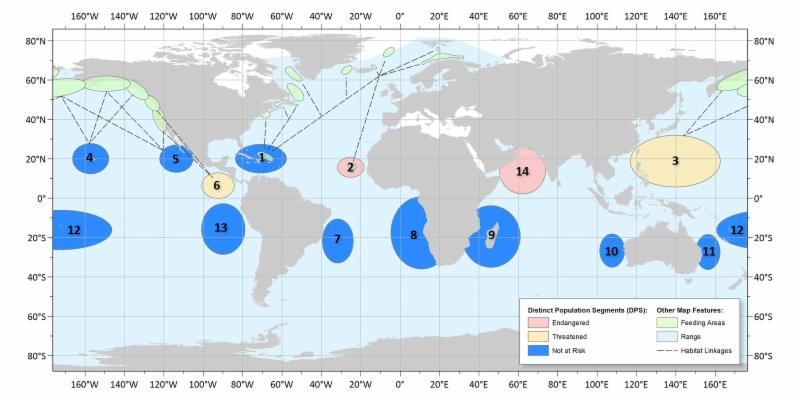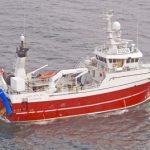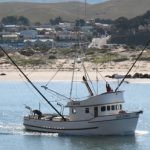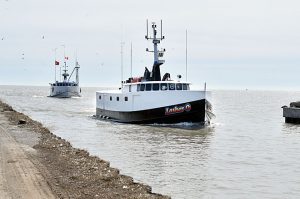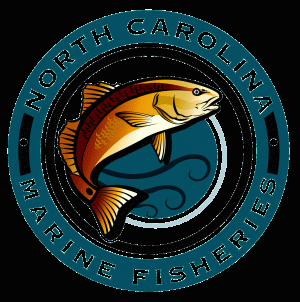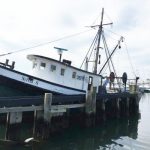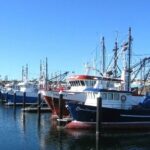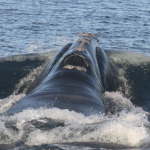Tag Archives: NMFS
New England: Fleet could see haddock quota double
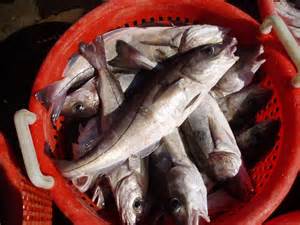 The annual catch limits for Gulf of Maine cod will increase slightly in 2016, while the quota for haddock will more than double if recommendations passed this week by the New England Fishery Management Council are approved by NOAA Fisheries. One year after slashing total cod quotas by more than 75 percent to 386 metric tons, the council voted at its three-day meeting in Portland, Maine, to raise the total cod annual catch limit (ACL) to about 440 metric tons, with 280 metric tons designated for the commercial fishing industry in each of the next three fishing seasons. Read the article here 08:20:38
The annual catch limits for Gulf of Maine cod will increase slightly in 2016, while the quota for haddock will more than double if recommendations passed this week by the New England Fishery Management Council are approved by NOAA Fisheries. One year after slashing total cod quotas by more than 75 percent to 386 metric tons, the council voted at its three-day meeting in Portland, Maine, to raise the total cod annual catch limit (ACL) to about 440 metric tons, with 280 metric tons designated for the commercial fishing industry in each of the next three fishing seasons. Read the article here 08:20:38
Tappan Zee Bridge construction may be killing sturgeon
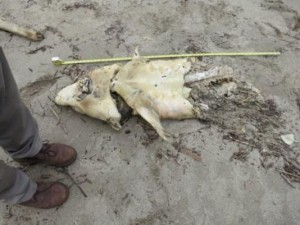 The environmental group Riverkeeper on Thursday called for a federal investigation to see if construction of the new Tappan Zee Bridge is causing the deaths of endangered sturgeon in the Hudson River. The group said 100 Atlantic and shortnose sturgeon have died since the start of construction in 2012. Many of the fish, which date back to pre-historic times, were found cut in half, severed at the head or mutilated, suggesting vessel strikes,,, Read the article here 19:46
The environmental group Riverkeeper on Thursday called for a federal investigation to see if construction of the new Tappan Zee Bridge is causing the deaths of endangered sturgeon in the Hudson River. The group said 100 Atlantic and shortnose sturgeon have died since the start of construction in 2012. Many of the fish, which date back to pre-historic times, were found cut in half, severed at the head or mutilated, suggesting vessel strikes,,, Read the article here 19:46
Sharks Numbers In East Coast At Record High Says NOAA Survey
 There are now more sharks off the U.S. East Coast than there have been in a generation, new research suggests. Scientists conduct the survey by putting out baited lines at a series of locations along the East Coast. When they repeat it, every two to three years, they return to these same spots and use the same techniques, Natanson says. To catch sharks, they put out a 2-mile-longline for three hours, and reel it in. They then measure and weigh the sharks that are small enough to be brought aboard, and tag them. Larger sharks must be put into a sling alongside the boat, and then they measure or estimate its length, Natanson says. Read the rest here 10:11
There are now more sharks off the U.S. East Coast than there have been in a generation, new research suggests. Scientists conduct the survey by putting out baited lines at a series of locations along the East Coast. When they repeat it, every two to three years, they return to these same spots and use the same techniques, Natanson says. To catch sharks, they put out a 2-mile-longline for three hours, and reel it in. They then measure and weigh the sharks that are small enough to be brought aboard, and tag them. Larger sharks must be put into a sling alongside the boat, and then they measure or estimate its length, Natanson says. Read the rest here 10:11
Electronic Monitoring versus At Sea Observers – Technology buoys fishermen devastated by cod’s collapse
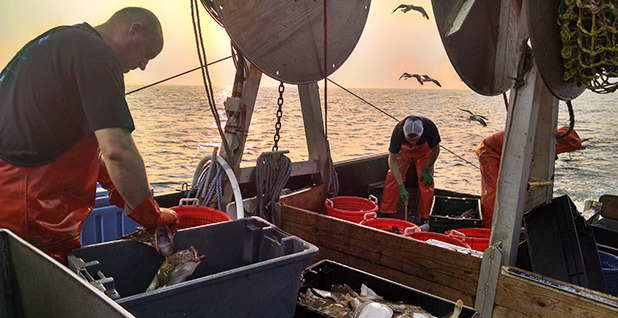 By the end of this year, NMFS wants groundfish fishermen to pay for their own “at-sea monitors,” the independent observers who collect data on bycatch and ensure fishermen follow the rules..”It’s the people that we’re dealing with that we trust,” said . “I know that John is trying to do the best he can, and I know the people he’s got working for him are trying to do the best they can.” As for the rest of NOAA? “Would you trust someone who has screwed you nonstop your whole life?” he said. “Thirty-five years ago, I thought it was different. I don’t anymore.” Read the rest here 12:09
By the end of this year, NMFS wants groundfish fishermen to pay for their own “at-sea monitors,” the independent observers who collect data on bycatch and ensure fishermen follow the rules..”It’s the people that we’re dealing with that we trust,” said . “I know that John is trying to do the best he can, and I know the people he’s got working for him are trying to do the best they can.” As for the rest of NOAA? “Would you trust someone who has screwed you nonstop your whole life?” he said. “Thirty-five years ago, I thought it was different. I don’t anymore.” Read the rest here 12:09
Fishermen say camera requirement invades privacy
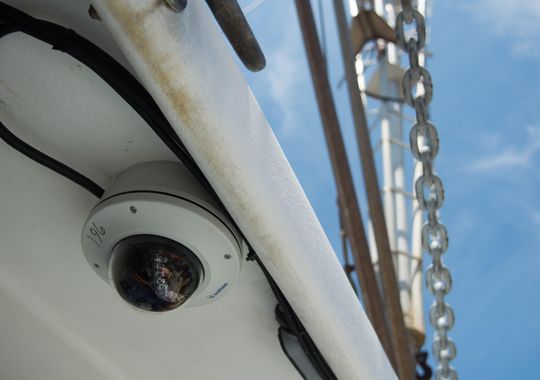 The cameras do a job on-boat observers have usually performed, allowing the National Oceanic and Atmospheric Administration to cover more ground by providing fleet-wide coverage. A contractor reviews the video tape to make sure it is consistent with what the anglers report. “NMFS needs an effective and efficient way to monitor,” public affairs officer Kate Brogan said. Having an observer aboard every vessel would be prohibitively expensive, along with the logistical issues of having another person aboard a boat. The cameras aren’t replacing in-person observers, Read the rest here 16:48
The cameras do a job on-boat observers have usually performed, allowing the National Oceanic and Atmospheric Administration to cover more ground by providing fleet-wide coverage. A contractor reviews the video tape to make sure it is consistent with what the anglers report. “NMFS needs an effective and efficient way to monitor,” public affairs officer Kate Brogan said. Having an observer aboard every vessel would be prohibitively expensive, along with the logistical issues of having another person aboard a boat. The cameras aren’t replacing in-person observers, Read the rest here 16:48
Re-opening of Commercial Sector for Atlantic Dolphin
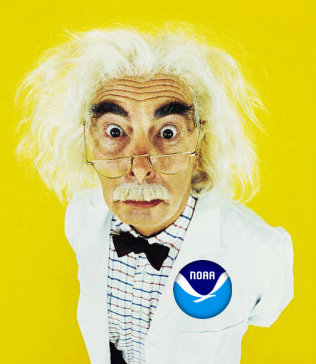 Because we understand that commercial Atlantic Highly Migratory Species (HMS) vessels may occasionally catch Atlantic dolphin, we want to make sure Atlantic HMS permit holders are aware of the following action. NMFS announces the re-opening of the commercial sector for Atlantic dolphin (dolphin) in the exclusive economic zone (EEZ) off the Atlantic states (Maine through the east coast of Florida) through a temporary rule. The most recent landings for dolphin indicate the commercial annual catch limit (ACL) has not yet been reached. Read the rest here 15:59
Because we understand that commercial Atlantic Highly Migratory Species (HMS) vessels may occasionally catch Atlantic dolphin, we want to make sure Atlantic HMS permit holders are aware of the following action. NMFS announces the re-opening of the commercial sector for Atlantic dolphin (dolphin) in the exclusive economic zone (EEZ) off the Atlantic states (Maine through the east coast of Florida) through a temporary rule. The most recent landings for dolphin indicate the commercial annual catch limit (ACL) has not yet been reached. Read the rest here 15:59
NOFish Announces Area Closures for Common Pool Northeast Groundfish Fishery
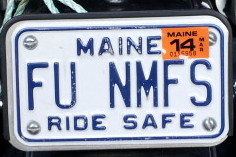
Red Snapper: management of a public resource gone completely haywire. And we’re paying to have this done to us.
 It’s important to note here that the total allowable take isn’t based solely on the feds’ vague guesswork on the number of landings. No, they add in what they believe to be the discard mortality rates — that of fish released and dying sometime later, predominately because of barotrauma. That occurs to differing extents when fish are brought up from depths and their air bladders expand too quickly — and don’t return to normal quickly enough when released. The federal scientists use a number to determine how often this happens. In the case of snapper, they speculate that 40 percent of all released fish die in the recreational sector and 60 percent in the commercial sector. Read the rest here 09:33
It’s important to note here that the total allowable take isn’t based solely on the feds’ vague guesswork on the number of landings. No, they add in what they believe to be the discard mortality rates — that of fish released and dying sometime later, predominately because of barotrauma. That occurs to differing extents when fish are brought up from depths and their air bladders expand too quickly — and don’t return to normal quickly enough when released. The federal scientists use a number to determine how often this happens. In the case of snapper, they speculate that 40 percent of all released fish die in the recreational sector and 60 percent in the commercial sector. Read the rest here 09:33
NMFS Emergency Action on Blueline Tilefish Effective June 4, 2015
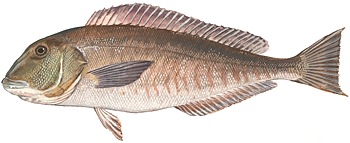 The measures, which go into effect Thursday, June 4 for vessels fishing north of the Virginia/North Carolina border, are: Commercial possession limit of 300 pounds whole weight per trip; Recreational limit of 7 fish per person, per trip; Requirement that commercial and charter/party vessels must hold a valid open access golden tilefish permits to land blueline tilefish. This temporary rule will be in place for 6 months, and may be extended for an additional 6 months, while the Mid-Atlantic and South Atlantic Councils develop a long-term management plan for the stock. Read the rest here 17:20
The measures, which go into effect Thursday, June 4 for vessels fishing north of the Virginia/North Carolina border, are: Commercial possession limit of 300 pounds whole weight per trip; Recreational limit of 7 fish per person, per trip; Requirement that commercial and charter/party vessels must hold a valid open access golden tilefish permits to land blueline tilefish. This temporary rule will be in place for 6 months, and may be extended for an additional 6 months, while the Mid-Atlantic and South Atlantic Councils develop a long-term management plan for the stock. Read the rest here 17:20
NOAA: $9M for projects to mitigate climate change threats! Nothing for observer coverage though.
 The National Oceanic and Atmospheric Administration is offering $9 million in grants to help coastal communities deal with extreme weather, changing ocean conditions and climate hazards. The NOAA National Ocean Service is providing $5 million through its Regional Coastal Resilience Grant Program and
The National Oceanic and Atmospheric Administration is offering $9 million in grants to help coastal communities deal with extreme weather, changing ocean conditions and climate hazards. The NOAA National Ocean Service is providing $5 million through its Regional Coastal Resilience Grant Program and NOAA Fisheries NMFS is providing the rest through the Coastal Ecosystem Resiliency Grants Program. (They sure know how to waste money!) Read the rest here 16:19
Susanne Altenburger — The only way out that’s left, Combining groundfish ecology with fleet economics
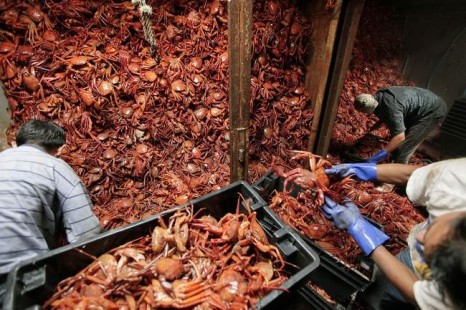 You’d figure that this is just another colorful waterfront tale, here of improbable schemes hatched by folks of grand ambitions fiercely pursuing 50 percent visions — to never quite succeed, despite rich claims of “institutional authority,” “legitimate interest-representation,” defining “industrial policies” under whatever fractured grasp of “ecology.” And it would be a fine yarn, indeed — had not our Resource-Ecology and our Fleet-&-Port Economics been damaged to the great cost to businesses, too many families, our communities. Read the rest here 08:18
You’d figure that this is just another colorful waterfront tale, here of improbable schemes hatched by folks of grand ambitions fiercely pursuing 50 percent visions — to never quite succeed, despite rich claims of “institutional authority,” “legitimate interest-representation,” defining “industrial policies” under whatever fractured grasp of “ecology.” And it would be a fine yarn, indeed — had not our Resource-Ecology and our Fleet-&-Port Economics been damaged to the great cost to businesses, too many families, our communities. Read the rest here 08:18
South Shore lobstermen design gear to both protect whales, ‘get our lobstering back’
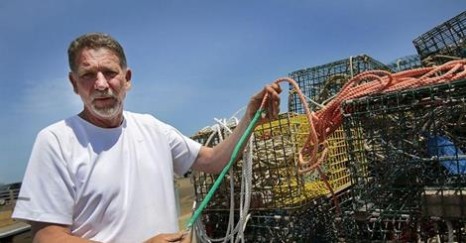 Some lobstermen plowed snow and worked side jobs during the three-month closure that ended May 1. Others repaired their equipment and puttered around, living off their savings. South Shore lobstermen John Haviland and Mike Lane spent the downtime poring over more than 1,000 pages of data and methodology from the National Marine Fisheries Service’s Atlantic Large Whale Take Reduction Plan. The new plan bans the use of lobstering equipment from Feb. 1 to April 30 off Cape Cod Bay and beyond, shutting down the local industry for the winter. Video, Read the rest here 16:59
Some lobstermen plowed snow and worked side jobs during the three-month closure that ended May 1. Others repaired their equipment and puttered around, living off their savings. South Shore lobstermen John Haviland and Mike Lane spent the downtime poring over more than 1,000 pages of data and methodology from the National Marine Fisheries Service’s Atlantic Large Whale Take Reduction Plan. The new plan bans the use of lobstering equipment from Feb. 1 to April 30 off Cape Cod Bay and beyond, shutting down the local industry for the winter. Video, Read the rest here 16:59
Red snapper season dates finalized
 Last week NOAA Fisheries published a rule implementing an increase to the commercial and recreational quotas for red snapper in the Gulf of Mexico through 2017. For 2015, the red snapper allowable catch is increasing from 11.0 million pounds whole weight to 14.3 million pounds. The commercial and recreational sector quotas will be based on the current 51 percent commercial and 49 percent recreational allocation. The commercial quota will increase to 7.29 million pounds the recreational quota will increase to 7.01 million pounds. Read the rest here 09:32
Last week NOAA Fisheries published a rule implementing an increase to the commercial and recreational quotas for red snapper in the Gulf of Mexico through 2017. For 2015, the red snapper allowable catch is increasing from 11.0 million pounds whole weight to 14.3 million pounds. The commercial and recreational sector quotas will be based on the current 51 percent commercial and 49 percent recreational allocation. The commercial quota will increase to 7.29 million pounds the recreational quota will increase to 7.01 million pounds. Read the rest here 09:32
NMFS Announces Approval of Three New England Groundfish Rules for Fishing Year 2015 (May 1, 2015-April 30, 2016)
 Today, NOAA Fisheries announces three actions affecting the Northeast Multispecies fishery. These are the final rules implementing Framework Adjustment 53 to the Northeast Multispecies Fishery Management Plan and the Sector Operations Plans for 2015-2016, and the interim final rule that implements additional recreational measures for the Northeast Multispecies fishery. Read the rest here. If you can stand it.
Today, NOAA Fisheries announces three actions affecting the Northeast Multispecies fishery. These are the final rules implementing Framework Adjustment 53 to the Northeast Multispecies Fishery Management Plan and the Sector Operations Plans for 2015-2016, and the interim final rule that implements additional recreational measures for the Northeast Multispecies fishery. Read the rest here. If you can stand it.
Endangered and Threatened Species: Critical Habitat for Endangered North Atlantic Right Whale-Proposed rule; request for comments.
 We, the NMFS, propose to replace the critical habitat for right whales in the North Atlantic with two new areas. The areas under consideration as critical habitat contain approximately 29,945 nm 2 of marine habitat in the region (Unit 1) and off the Southeast U.S. coast (Unit 2). We have considered positive and negative economic, national security, and other relevant impacts of the proposed critical habitat. We do not propose to exclude any particular area from the proposed critical habitat. Read the rest here 14:10
We, the NMFS, propose to replace the critical habitat for right whales in the North Atlantic with two new areas. The areas under consideration as critical habitat contain approximately 29,945 nm 2 of marine habitat in the region (Unit 1) and off the Southeast U.S. coast (Unit 2). We have considered positive and negative economic, national security, and other relevant impacts of the proposed critical habitat. We do not propose to exclude any particular area from the proposed critical habitat. Read the rest here 14:10
NMFS Implements Management Measures to End Overfishing of Blueline Tilefish in the South Atlantic

NOAA Fisheries NMFS is implementing management measures in Amendment 32 to the Fishery Management Plan for the Snapper-Grouper Fishery of the South Atlantic Region (Amendment 32). The final rule publishes in the Federal Register, and is effective, on March 30, 2015. A commercial trip limit of 100 pounds gutted weight is included. Read the notice here 16:57
NMFS Accepts Two Petitions to List Porbeagle Sharks under the Endangered Species Act
 Today, we announce that we have made a positive 90-day finding on two petitions (Wild Earth Guardians, and Humane Society US) submitted to us to consider listing porbeagle sharks (Lamna nasus) under the Endangered Species Act (ESA). This action is being taken in response to a recent court order concerning the negative 90-day finding we published in 2010, and in response to new information we have on porbeagle sharks. Read the rest here 10:06
Today, we announce that we have made a positive 90-day finding on two petitions (Wild Earth Guardians, and Humane Society US) submitted to us to consider listing porbeagle sharks (Lamna nasus) under the Endangered Species Act (ESA). This action is being taken in response to a recent court order concerning the negative 90-day finding we published in 2010, and in response to new information we have on porbeagle sharks. Read the rest here 10:06
Pacific Ocean warms up along Oregon Coast, drawing unusual visitors
 “As far as climate scientists know, it could be a weird aberration or it could very well be something that could stick around for a while,” he said. Or as Northwest Fisheries Science Center Director John Stien put it, “We’re seeing some major environmental shifts taking place that could affect the ecosystem for years to come.” Nate Mantua, another NOAA scientist, said the conditions are so unusual that he believes they won’t be long-lasting. Read the rest here 07:37
“As far as climate scientists know, it could be a weird aberration or it could very well be something that could stick around for a while,” he said. Or as Northwest Fisheries Science Center Director John Stien put it, “We’re seeing some major environmental shifts taking place that could affect the ecosystem for years to come.” Nate Mantua, another NOAA scientist, said the conditions are so unusual that he believes they won’t be long-lasting. Read the rest here 07:37
2015 charter and commercial halibut management measures announced
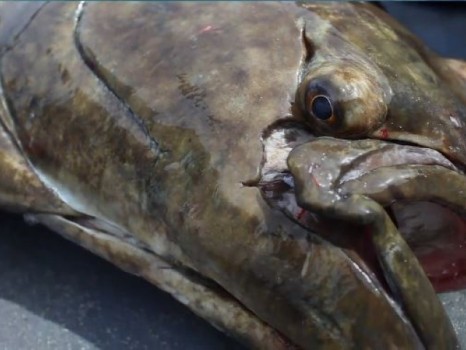 NMFS is providing notice of the immediate effect of regulations of the International Pacific Halibut Commission (IPHC). The commercial IFQ halibut season opens Saturday, March 14, 2015. At its annual meeting in January, the IPHC recommended to the governments of Canada and the United States catch limits for 2015 totaling 29,223,000 pounds. Read the rest here 07:23
NMFS is providing notice of the immediate effect of regulations of the International Pacific Halibut Commission (IPHC). The commercial IFQ halibut season opens Saturday, March 14, 2015. At its annual meeting in January, the IPHC recommended to the governments of Canada and the United States catch limits for 2015 totaling 29,223,000 pounds. Read the rest here 07:23
Sharpen the Harpoon, U.S. study could allow hunting of North Pacific gray whale
 A federal agency has released a study that could open the door for hunting of the North Pacific gray whale by the Makah Indian tribe off the Washington coast. The draft report from the National Oceanic and Atmospheric Administration’s Fisheries division that was released Friday proposes six options that range from prohibiting the annual hunt for North Pacific gray whales to allowing the harvest of up to 24 whales in a six-year period. Read the rest here 17:34
A federal agency has released a study that could open the door for hunting of the North Pacific gray whale by the Makah Indian tribe off the Washington coast. The draft report from the National Oceanic and Atmospheric Administration’s Fisheries division that was released Friday proposes six options that range from prohibiting the annual hunt for North Pacific gray whales to allowing the harvest of up to 24 whales in a six-year period. Read the rest here 17:34
Sea scallop surveys under scrutiny during upcoming NOAA conference
Three intensive days of meetings to evaluate ways of  have been scheduled for mid-March in New Bedford,
have been scheduled for mid-March in New Bedford, NOAA Fisheries NMFS announced. Among those participating will be Dr. Kevin Stokesbury, who developed the drop-camera method of directly counting scallops on the sea floor. The method upended assumptions about scallop populations and transformed the industry into the success it has been for many years. Read the rest here Review of Sea Scallop Survey Methodologies and Their Integration for Stock Assessment and Fishery Management Read the notice here 09:27
South Atlantic: When estimating fish populations, seeing is believing
 Somewhere off the Atlantic coast of Florida, a fishing boat bobs in the swell, and Nate Bacheler helps swing a fish trap over the side. It’s a big metal cage shaped like a giant arrowhead, and it looks like the standard design. But this is no ordinary fish trap, and Nate Bacheler is no ordinary fisherman. Traps without cameras work great for many species. But some species, like gag grouper, have a habit of avoiding fish traps. Read he rest here 15:40
Somewhere off the Atlantic coast of Florida, a fishing boat bobs in the swell, and Nate Bacheler helps swing a fish trap over the side. It’s a big metal cage shaped like a giant arrowhead, and it looks like the standard design. But this is no ordinary fish trap, and Nate Bacheler is no ordinary fisherman. Traps without cameras work great for many species. But some species, like gag grouper, have a habit of avoiding fish traps. Read he rest here 15:40
New Critical Habitat Proposed for North Atlantic Right Whales
 The proposed critical habitat, which you can see in the maps below, greatly expands the previous designation. The key benefit of designating critical habitat is that other Federal agencies are put on notice that they must consult with NOAA Fisheries if they intend to authorize, fund, or carry out an action that may affect right whale critical habitat. This activity does not include any new restrictions for commercial fishing operations or shipping lanes. (yet!) Read the rest here 08:01
The proposed critical habitat, which you can see in the maps below, greatly expands the previous designation. The key benefit of designating critical habitat is that other Federal agencies are put on notice that they must consult with NOAA Fisheries if they intend to authorize, fund, or carry out an action that may affect right whale critical habitat. This activity does not include any new restrictions for commercial fishing operations or shipping lanes. (yet!) Read the rest here 08:01
Pacific Bluefin Tuna – why California’s fishermen are impacted
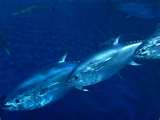 Recent actions and findings by international, federal and state fishery managers will result in reduced commercial and recreational take of Pacific Bluefin tuna. California based purse-seine vessels will see their catch limit reduced by a minimum of 40%. California based recreational anglers will see their daily bag limit reduced from 10-fish to 2-fish. New filet regulations developed with input from enforcement, scientists, and the sportfishing community were recently approved by the California Fish and Game Commission which will impact how you process your fish at sea. Read the rest here 10:25
Recent actions and findings by international, federal and state fishery managers will result in reduced commercial and recreational take of Pacific Bluefin tuna. California based purse-seine vessels will see their catch limit reduced by a minimum of 40%. California based recreational anglers will see their daily bag limit reduced from 10-fish to 2-fish. New filet regulations developed with input from enforcement, scientists, and the sportfishing community were recently approved by the California Fish and Game Commission which will impact how you process your fish at sea. Read the rest here 10:25
Sue and Settle Enviro Groups Go To Court to Protect Blueback Herring from Extinction
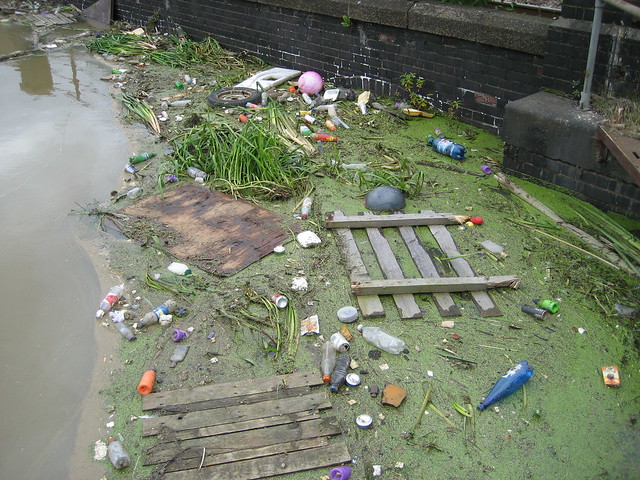 Washington, D.C. — Earthjustice, the Natural Resources Defense Council (NRDC) and a coalition of fishing and watershed protection groups, Anglers Conservation Network, Great Egg Harbor River Council and Watershed Association, Delaware River Shad Fishermen’s Association, filed a complaint today in federal court seeking to reverse a decision by the National Marine Fisheries Service (NMFS) not to list the blueback herring as a threatened species under the Endangered Species Act. Read the rest here 13:41
Washington, D.C. — Earthjustice, the Natural Resources Defense Council (NRDC) and a coalition of fishing and watershed protection groups, Anglers Conservation Network, Great Egg Harbor River Council and Watershed Association, Delaware River Shad Fishermen’s Association, filed a complaint today in federal court seeking to reverse a decision by the National Marine Fisheries Service (NMFS) not to list the blueback herring as a threatened species under the Endangered Species Act. Read the rest here 13:41
Editorial: NOAA’s dismissal of industry offer sadly no surprise
 Maggie Raymond of the Associated Fisheries of Maine said she was “flabbergasted” last week when NOAA regional administrator John Bullard essentially dismissed any requests to scale back or otherwise revise the that have brought new area closures and further tightened the noose around the commercial fishing industry. She also said it’s “shocking” that NOAA Fisheries is apparently not willing to work with the industry in resolving the critical issues at hand. It shouldn’t be. Read the rest here 11:05
Maggie Raymond of the Associated Fisheries of Maine said she was “flabbergasted” last week when NOAA regional administrator John Bullard essentially dismissed any requests to scale back or otherwise revise the that have brought new area closures and further tightened the noose around the commercial fishing industry. She also said it’s “shocking” that NOAA Fisheries is apparently not willing to work with the industry in resolving the critical issues at hand. It shouldn’t be. Read the rest here 11:05
Our view: Bridging NOAA’s credibility gap
 Bill Karp, director of the Northeast Fisheries Science Center, should have a chance later this week to bridge some fundamental gaps in trust and credibility when he delivers a report on NOAA Fisheries’ stock assessment process and scientific models program. To his credit, he concedes the enormous disconnect between what NOAA Fisheries has found in its stock assessments and what fishermen see every day on the water is a significant problem. Read the rest here 11:26
Bill Karp, director of the Northeast Fisheries Science Center, should have a chance later this week to bridge some fundamental gaps in trust and credibility when he delivers a report on NOAA Fisheries’ stock assessment process and scientific models program. To his credit, he concedes the enormous disconnect between what NOAA Fisheries has found in its stock assessments and what fishermen see every day on the water is a significant problem. Read the rest here 11:26
Commercial King Mackerel Trip Limit to Decrease in the Southern West Coast Florida Subzone
 The daily vessel trip limit is reduced to 500 pounds beginning 12:01 a.m., local time, January 24, 2015, for Gulf group king mackerel in the southern Florida west coast subzone. NMFS
The daily vessel trip limit is reduced to 500 pounds beginning 12:01 a.m., local time, January 24, 2015, for Gulf group king mackerel in the southern Florida west coast subzone. NMFS NOAA Fisheries is reducing the trip limit because 75 percent (or 413,586 pounds) of the 551,448-pound quota is projected to be taken. The 500-pound daily trip limit will remain in effect until the quota is reached or through the end of the fishing year, June 30, 2015, whichever occurs first. Read the rest here 09:39







